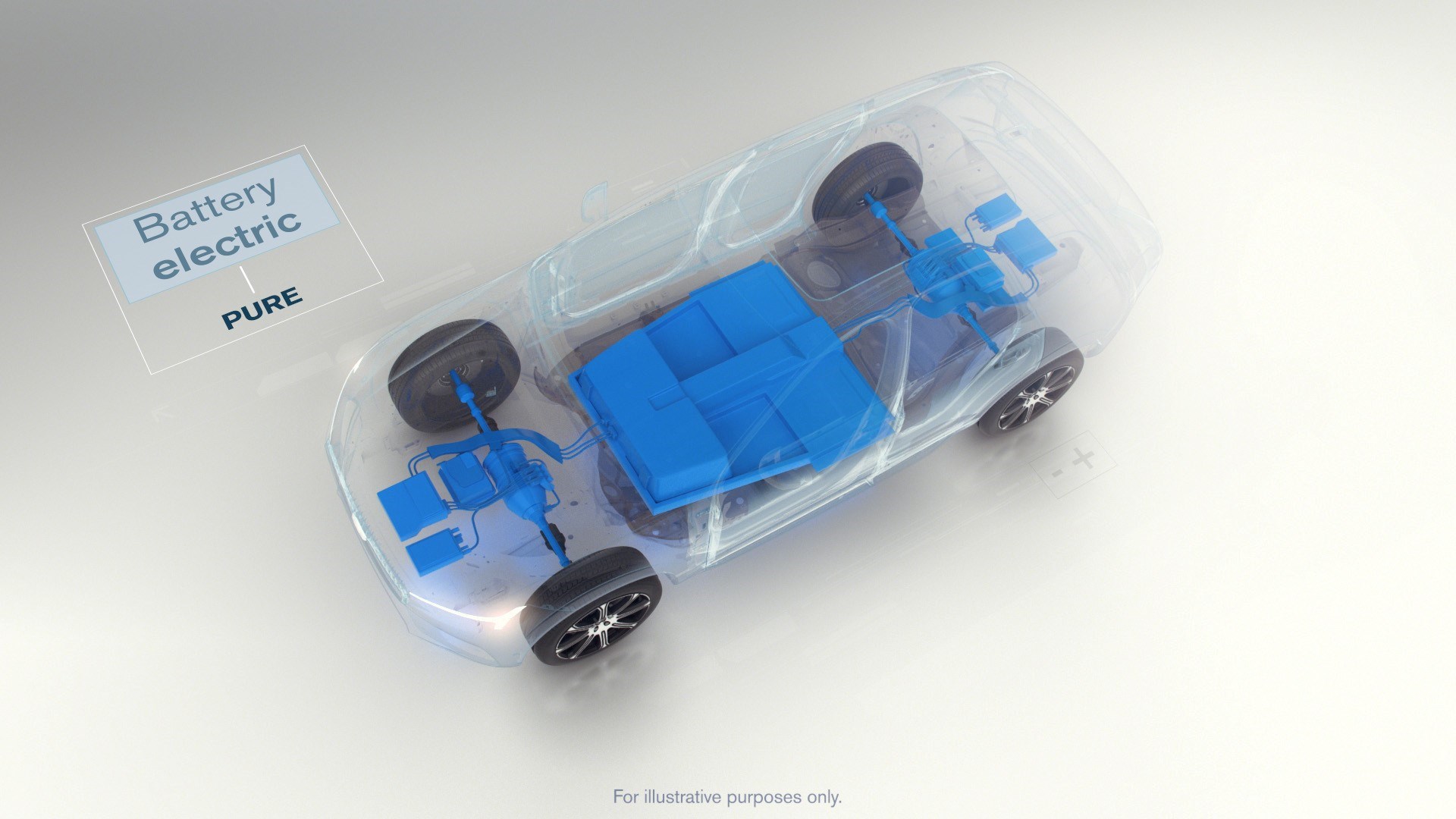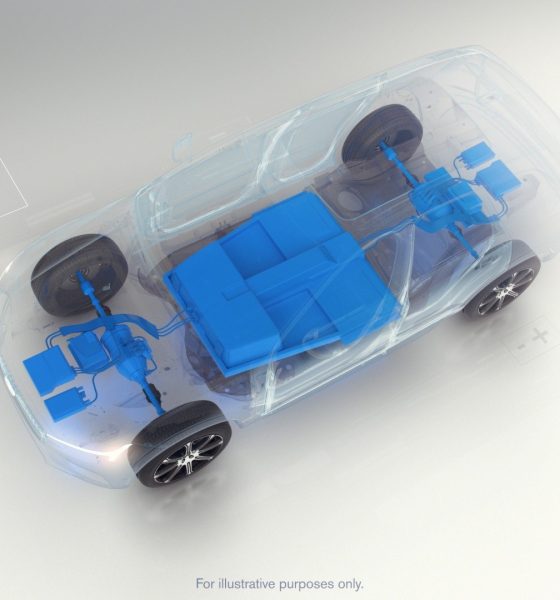

News
Volvo throws down the gauntlet, will produce only “electrified” vehicles by 2019
This article first appeared on:
Volvo plans to only produce cars with an electric motor by 2019, and hopes to have 1 million EVs on the road by 2025.
“This announcement marks the end of the solely combustion engine-powered car,” said Håkan Samuelsson, president and chief executive. “Volvo Cars has stated that it plans to have sold a total of 1 million electrified cars by 2025. When we said it, we meant it.”
Volvo’s announcement is a major stride for the sustainable energy vehicle market, according to a Volvo press release. With the evolution of the electric motor and the decline of the internal combustion engine, Volvo is looking to join the likes of Tesla in developing EVs and changing the world’s transportation.
The company is the “first car company in the world to say that the pure internal combustion engine is going to evolve into the next stage of its development,” said David Ibison, SVP of Corporate Communications, in a press conference Wednesday.
Volvo plans to roll out five electric models between 2019 and 2021, two of which will be on Volvo’s performance car arm Polestar. These five models will become the car giant’s main product as other ICE models are “phased out,” according to the press release.
The announcement comes as an example of Volvo’s commitment to clean energy and reducing the environmental impact of its vehicles and factories, a goal that aligns with Elon Musk and Tesla’s vision for a sustainable future.
While the company’s optimism for sustainability was apparent Wednesday, there are still several real-world, practical questions that need to be answered when it comes to logistics. A major challenge for EV developers has been integrating its production process to make battery and vehicle production realistic.
“We were skeptical on the cost of batteries and the lack of infrastructure to charge cars. We still believe that plug-in vehicles are very good bridge into the new world,” Samuelsson said when asked about the company’s new direction. “Battery costs have come down and there is also movement in charging infrastructure.”
Some skeptical voices in the industry are saying that the announcements could be the result of Geely — a Chinese automotive manufacturer that invested $11 billion into Volvo — pushing for a product that can compete with Tesla.
“It (Tesla) is a tough competitor,” Samuelsson said. “We are becoming the second automaker to go all electric.”
Tesla fans everywhere will no doubt harp on his words: “second automaker.”
As Volvo joins Jaguar, Chevy and other car companies to be more competitive in the EV market, one can’t help but imagine Elon Musk smiling, his long-term hopes for sustainable energy coming to fruition.
Update 2:05 ET: An earlier version of this article stated that Volvo would produce only EV’s, it is now corrected to reflect Volvo’s plans to produce only “electrified” vehicles, including plug-in hybrids.

News
Tesla FSD fleet is nearing 7 billion total miles, including 2.5 billion city miles
As can be seen on Tesla’s official FSD webpage, vehicles equipped with the system have now navigated over 6.99 billion miles.

Tesla’s Full Self-Driving (Supervised) fleet is closing in on almost 7 billion total miles driven, as per data posted by the company on its official FSD webpage.
These figures hint at the massive scale of data fueling Tesla’s rapid FSD improvements, which have been quite notable as of late.
FSD mileage milestones
As can be seen on Tesla’s official FSD webpage, vehicles equipped with the system have now navigated over 6.99 billion miles. Tesla owner and avid FSD tester Whole Mars Catalog also shared a screenshot indicating that from the nearly 7 billion miles traveled by the FSD fleet, more than 2.5 billion miles were driven inside cities.
City miles are particularly valuable for complex urban scenarios like unprotected turns, pedestrian interactions, and traffic lights. This is also the difference-maker for FSD, as only complex solutions, such as Waymo’s self-driving taxis, operate similarly on inner-city streets. And even then, incidents such as the San Francisco blackouts have proven challenging for sensor-rich vehicles like Waymos.
Tesla’s data edge
Tesla has a number of advantages in the autonomous vehicle sector, one of which is the size of its fleet and the number of vehicles training FSD on real-world roads. Tesla’s nearly 7 billion FSD miles then allow the company to roll out updates that make its vehicles behave like they are being driven by experienced drivers, even if they are operating on their own.
So notable are Tesla’s improvements to FSD that NVIDIA Director of Robotics Jim Fan, after experiencing FSD v14, noted that the system is the first AI that passes what he described as a “Physical Turing Test.”
“Despite knowing exactly how robot learning works, I still find it magical watching the steering wheel turn by itself. First it feels surreal, next it becomes routine. Then, like the smartphone, taking it away actively hurts. This is how humanity gets rewired and glued to god-like technologies,” Fan wrote in a post on X.
News
Tesla starts showing how FSD will change lives in Europe
Local officials tested the system on narrow country roads and were impressed by FSD’s smooth, human-like driving, with some calling the service a game-changer for everyday life in areas that are far from urban centers.

Tesla has launched Europe’s first public shuttle service using Full Self-Driving (Supervised) in the rural Eifelkreis Bitburg-Prüm region of Germany, demonstrating how the technology can restore independence and mobility for people who struggle with limited transport options.
Local officials tested the system on narrow country roads and were impressed by FSD’s smooth, human-like driving, with some calling the service a game-changer for everyday life in areas that are far from urban centers.
Officials see real impact on rural residents
Arzfeld Mayor Johannes Kuhl and District Administrator Andreas Kruppert personally tested the Tesla shuttle service. This allowed them to see just how well FSD navigated winding lanes and rural roads confidently. Kruppert said, “Autonomous driving sounds like science fiction to many, but we simply see here that it works totally well in rural regions too.” Kuhl, for his part, also noted that FSD “feels like a very experienced driver.”
The pilot complements the area’s “Citizen Bus” program, which provides on-demand rides for elderly residents who can no longer drive themselves. Tesla Europe shared a video of a demonstration of the service, highlighting how FSD gives people their freedom back, even in places where public transport is not as prevalent.
What the Ministry for Economic Affairs and Transport says
Rhineland-Palatinate’s Minister Daniela Schmitt supported the project, praising the collaboration that made this “first of its kind in Europe” possible. As per the ministry, the rural rollout for the service shows FSD’s potential beyond major cities, and it delivers tangible benefits like grocery runs, doctor visits, and social connections for isolated residents.
“Reliable and flexible mobility is especially vital in rural areas. With the launch of a shuttle service using self-driving vehicles (FSD supervised) by Tesla in the Eifelkreis Bitburg-Prüm, an innovative pilot project is now getting underway that complements local community bus services. It is the first project of its kind in Europe.
“The result is a real gain for rural mobility: greater accessibility, more flexibility and tangible benefits for everyday life. A strong signal for innovation, cooperation and future-oriented mobility beyond urban centers,” the ministry wrote in a LinkedIn post.
News
Tesla China quietly posts Robotaxi-related job listing
Tesla China is currently seeking a Low Voltage Electrical Engineer to work on circuit board design for the company’s autonomous vehicles.

Tesla has posted a new job listing in Shanghai explicitly tied to its Robotaxi program, fueling speculation that the company is preparing to launch its dedicated autonomous ride-hailing service in China.
As noted in the listing, Tesla China is currently seeking a Low Voltage Electrical Engineer to work on circuit board design for the company’s autonomous vehicles.
Robotaxi-specific role
The listing, which was shared on social media platform X by industry watcher @tslaming, suggested that Tesla China is looking to fill the role urgently. The job listing itself specifically mentions that the person hired for the role will be working on the Low Voltage Hardware team, which would design the circuit boards that would serve as the nervous system of the Robotaxi.
Key tasks for the role, as indicated in the job listing, include collaboration with PCB layout, firmware, mechanical, program management, and validation teams, among other responsibilities. The role is based in Shanghai.
China Robotaxi launch
China represents a massive potential market for robotaxis, with its dense urban centers and supportive policies in select cities. Tesla has limited permission to roll out FSD in the country, though despite this, its vehicles have been hailed as among the best in the market when it comes to autonomous features. So far, at least, it appears that China supports Tesla’s FSD and Robotaxi rollout.
This was hinted at in November, when Tesla brought the Cybercab to the 8th China International Import Expo (CIIE) in Shanghai, marking the first time that the autonomous two-seater was brought to the Asia-Pacific region. The vehicle, despite not having a release date in China, received a significant amount of interest among the event’s attendees.









